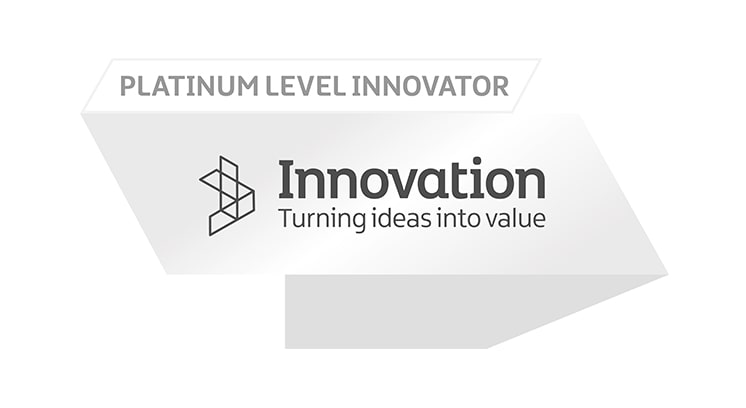AMP8 | Combating Skilled Labour Shortages
As the UK utility contractor industry braces for AMP8 (Asset Management Period 8), the challenge of addressing skilled labour shortages is increasingly paramount. This blog, part of our AMP8 series, explores how dynamic scheduling and innovative working conditions are vital in this transformative period.
What is AMP8?
AMP8, or an ‘Asset Management Plan’, is a five-year strategy outlined in a water utility’s business plan, which establishes both immediate and future goals for the forthcoming cycle. These AMP periods, determined by the sector’s regulatory body Ofwat, aim to enhance efficiency and elevate service standards in the industry.
AMP8: A New Chapter with Old Challenges
AMP8 introduces a transformative agenda for utility contractors, focusing on efficiency and elevated service levels. However, it also brings to the fore existing challenges, notably the shortage of skilled labour. This issue, already a point of concern for the industry, has been exacerbated by several factors, such as Brexit, ongoing economic uncertainties, and the residual effects of the COVID-19 pandemic.
In this context, understanding how different sectors tackle similar challenges becomes crucial. The experience of the Kelly Group in the telecommunications sector offers insightful parallels. Their innovative approach to managing existing resource capacity through dynamic scheduling provides a blueprint that utility contractors can follow to meet the demands of AMP8. As utility contractors navigate the complex waters of this new regulatory phase, learning from cross-industry experiences could prove invaluable in overcoming workforce challenges and driving forward the ambitious goals of AMP8.
Curious to learn more about AMP8? Check out our previous blog for our AMP8 deep dive.
Kelly Group: A Paradigm of Dynamic Scheduling
The Kelly Group‘s resource management journey spotlights the power of innovation in the face of growing service complexity. Confronted with an expanding portfolio of services and the need to manage a significant workforce efficiently, Kelly Group turned to Optimise–our cloud-based, dynamic scheduling solution. This strategic shift enabled them to manage a growing task load — over 1.8 million broadband installation jobs annually — with a team of over 1,000 field engineers.
What makes this transition noteworthy is its alignment with the core objectives of AMP8. By implementing Optimise, Kelly Group not only enhanced their operational efficiency but also set a standard for service delivery that resonates with AMP8’s emphasis on elevated service levels. Their ability to match the right engineer with the right job at the right time minimised downtime and maximised productivity–principles that are at the heart of AMP8’s transformative agenda.
Kelly Group’s experience shows the relevance of dynamic scheduling in addressing the skilled labour shortage. In an era where utility contractors are expected to do more with less, the ability to efficiently allocate and utilise existing team resources becomes a critical success factor.
The Group’s successful deployment of a dynamic scheduling system shows how embracing technological solutions can lead to significant gains in workforce management, helping meet the overarching goals of AMP8.
Work Patterns Beyond Scheduling
Kelly Group’s approach extends beyond logistical efficiency. By fostering a work environment that values work-life balance and fair work distribution, they address a crucial aspect echoed in our original blog: the need for empathetic and flexible work patterns in the face of evolving industry challenges.
This integrated approach to working patterns involves reshaping the work culture to support the individual needs of staff. This encompasses not only equitable task allocation but also accommodating flexible shift patterns, catering to the diverse life circumstances of their workforce. By adopting this approach, Kelly Group has acknowledged and adapted to the broader industry trend towards more person-centric work practices.
Such practices are increasingly recognised as vital in attracting and retaining skilled workers. This is especially true in sectors like utility contracting, where skilled labour is in high demand. Kelly Group’s experience demonstrates that prioritising employee well-being is both a moral imperative and a strategic necessity in today’s competitive labour market.
Read More: Shift Pattern and Rostering – Becoming an Employer of Choice
Environmental and Efficiency Gains in Line with AMP8
Kelly Group’s adoption of Optimise has led to notable environmental benefits. A significant outcome has been the reduction in carbon emissions, achieved by minimising unnecessary travel. This was not just a peripheral advantage, but a direct consequence of more efficient job scheduling and routing. By optimising routes and reducing travel distances for each job, Kelly Group not only enhanced operational efficiency but also contributed considerably to reducing their environmental impact.
This dual achievement of increased service efficiency and environmental sustainability is a cornerstone of AMP8. The focus on cutting carbon emissions reflects an evolving regulatory landscape that values sustainable practices. Kelly Group’s experience shows how operational changes aimed at boosting efficiency can also yield substantial environmental benefits. In the wider context of the utility sector, this case serves as a persuasive example of how addressing operational challenges can lead to progress in environmental sustainability, a crucial aim of the AMP8 era.
Conclusion: Lessons for the AMP8 Journey
As utility contractors navigate the complexities of AMP8, the Kelly Group’s experience serves as a beacon. Dynamic scheduling and empathetic work conditions are not just tools for efficiency; they are essential strategies for thriving in the demanding landscape of AMP8.
As utility contractors embark on this journey, the message is clear: embrace innovation, adapt with agility, and commit to sustainable practices. The AMP8 era is an opportunity to not just adapt but to lead—to transform challenges into opportunities for growth, efficiency, and environmental stewardship. The future of the utility sector hinges on our ability to innovate and evolve, and the time to act is now.

















